RUCKING GEAR TIPS
- Make the weight stable inside your ruck.
- Cinch your ruck all the way down – no beboppin’.
- Don’t forget to hydrate.
You wear a backpack, it’s a fitness thing. When in doubt, start with 20 lbs. Whatever bag you use, you want it to conform to your back as much as possible. The number one mistake we see, is when new ruckers keep their bag too low on their back. So, cinch it down and go. Target pace is 15 minutes/mile
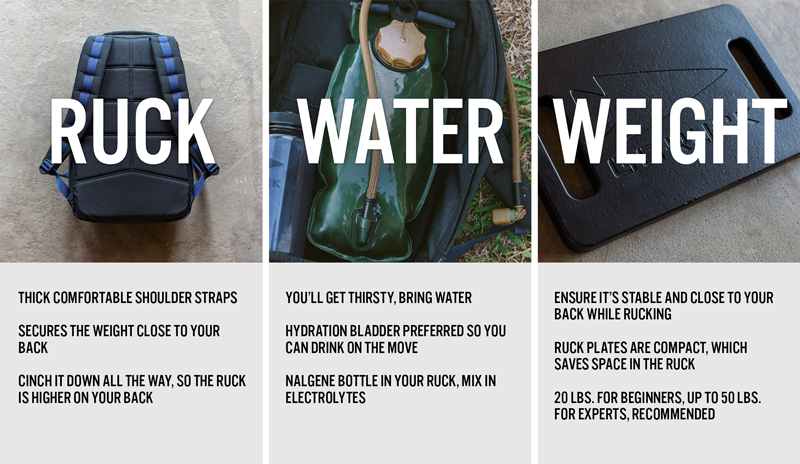
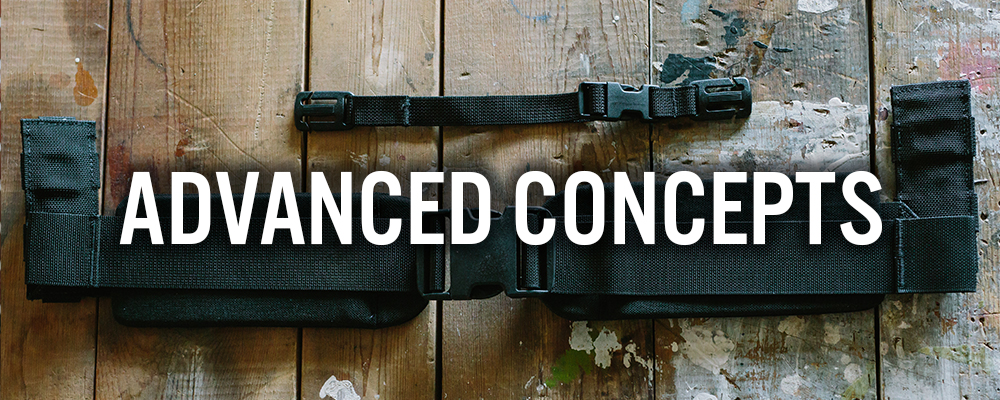
DISPERSE THE WEIGHT ON THE MOVE. Over time and distance, especially at heavier loads, you’ll want to adjust how the ruck sits on your body. Sternum straps and Padded Hip Belts help to this end. How they work – the trade-offs:
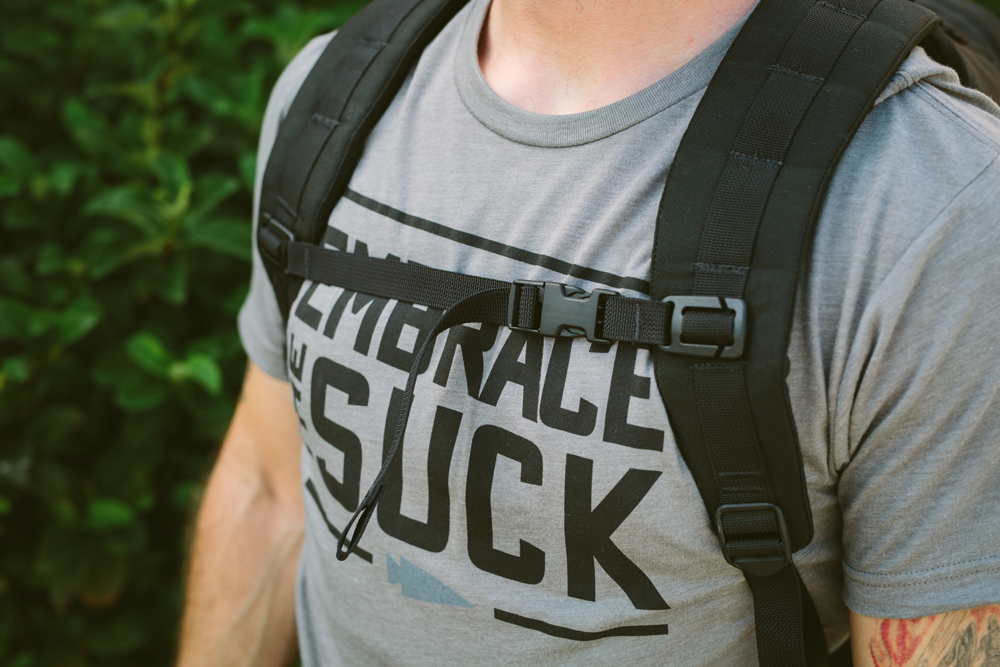
STERNUM STRAPS pull the shoulder straps inward and alters how the ruck sits on your shoulders, and your back. The load feels more dispersed across the front of your chest with a sternum strap, than without. The downside to sternum straps is that when buckled, your shoulders roll forward more and your chest will not be quite as open. This can slightly constrict your breathing. The trick is to adjust how tightly you secure it, and to alternate it buckled/unbuckled, so that the weight works different muscles from different angles, and you’re able to open your chest and breathe as deeply as possible on the move.
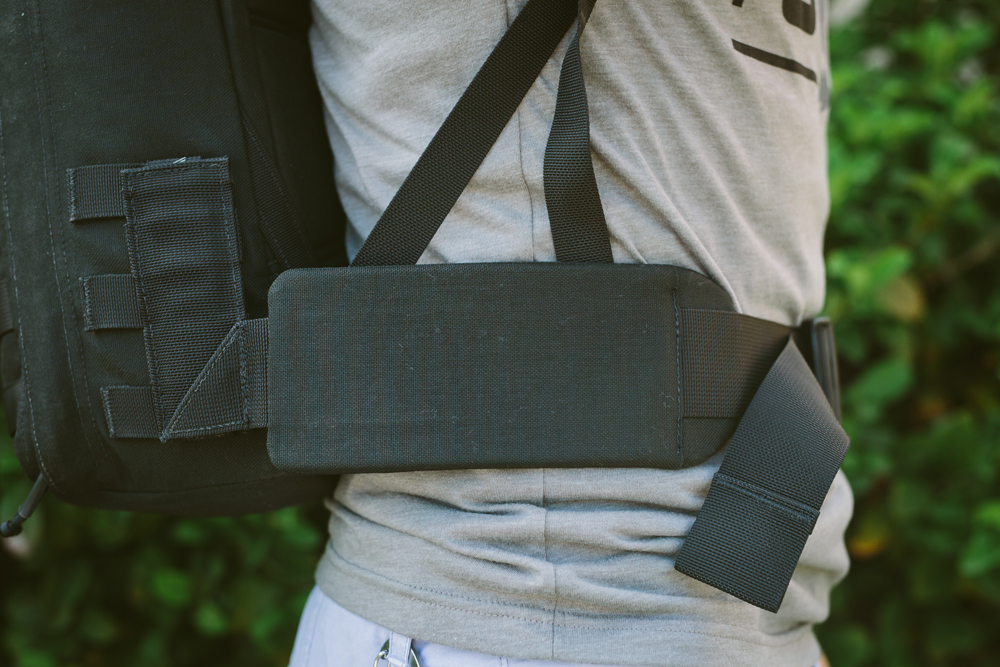
HIP BELTS allow you to rest (more of) the ruck’s weight your hips. When attached, it needs to rest over your hip bones. That means you’ll likely have to lower the ruck on your back. Over significant time, distance, and varied terrain with heavy loads, these are useful, as this technique can provide a break for your upper body and disperse the weight entirely to your lower body. For rucking lower weights (20 or 30 lbs.) for fitness, though, they’re not necessary. When rucking for fitness, part of the goal is to gain upper body strength from the resistance of the weight. When rucking significant distances or time, such as at a GORUCK Heavy (24+ hours), having a Padded Hip Belt lets you rest your shoulders and back from time to time, and will provide some much sought after comfort.
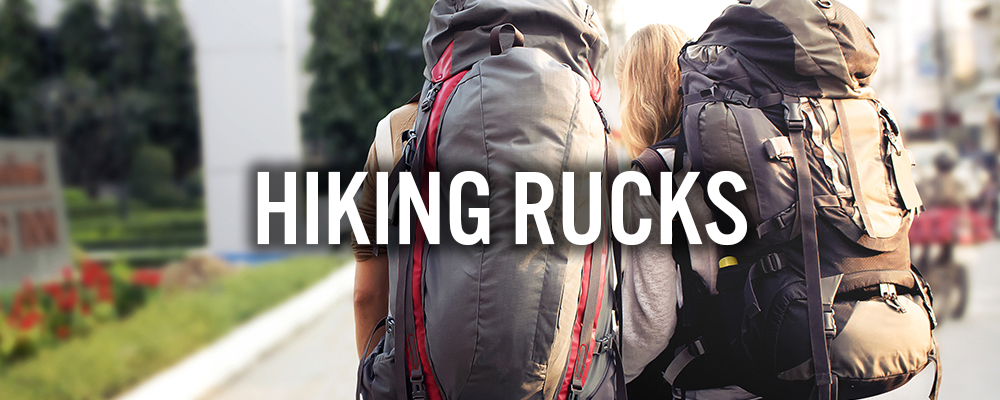
We define hiking as rucking in the mountains. Hiking purists will discount the importance of shoulder straps, saying that the load should rest entirely on your hips. To that end, hiking packs have thin shoulder straps and very large, padded hip belts. Hiking packs encourage you to under-utilize the strength in your upper body, even though it can help disperse the resistance put on your legs with every step. If you do try to carry more of the weight on your shoulders with a hiking pack, it’s uncomfortable.
There’s no good reason not to have a solid option for both a shoulder carry and a hip belt carry on significant movements. As one part of your body fatigues, you can shift the load more to the other.
As an Everyday Carry (EDC), hiking packs are totally impractical. Do you really want to go through airports or cities or subways or your school’s campus with a bulky hip belt and straps flapping around everywhere, as you carry a bag with inadequate and uncomfortable shoulder straps? We don’t. That’s why we designed and built rucks that could thrive anywhere by adapting to any environment.
And when you a GORUCK Rucksack as intended, with weight, they’re an investment in the fitness of rucking that you can put to use on a daily basis, as your EDC.
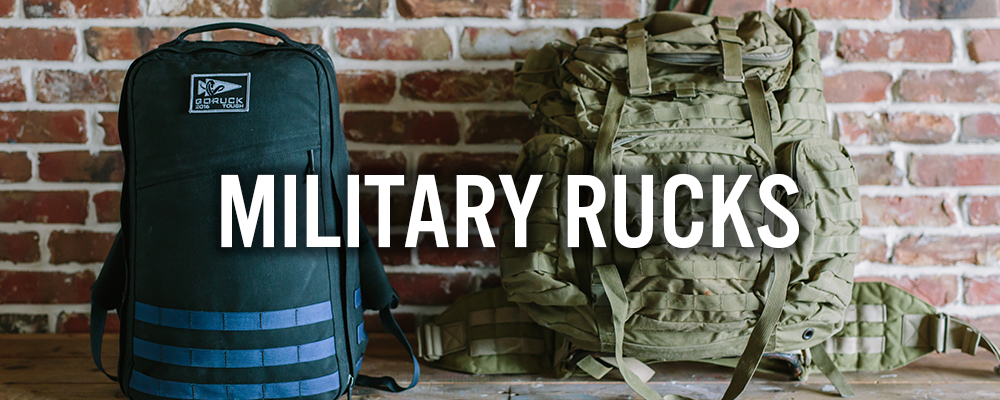
When wearing body armor, soldiers attach ammunition (via MOLLE style pouches) to their front. Both hip belts and sternum straps would get in the way of their ability to reach ammunition, so neither is typically used in combat anymore, especially as urban warfare has come to dominate the bulk of operations and assault packs like GR1 are prized for their streamlined design.
So, in the military you learn to do a shoulder carry as your primary technique. This creates a rucker’s body, which is proportionately strong in the upper and lower bodies, with strength and endurance stemming from both.
Note: in military training environments, hip belts and sternum straps are common to issued MOLLE packs, which are huge and function great if you need to carry 150 lbs. of things like radios and batteries and ammunition. If you’re not a soldier, don’t carry this much weight, ever. Excruciating weight in a ruck that’s half the size of half the countries in the world is part of the reason why many military folks think not so fondly about their days of military ruck marches.
GORUCK = the best of Military and Hiking Techniques. At GORUCK, we’re combining the best of the military techniques, and gear, with those of hikers and hiking packs. Rucking as fitness is best with a ruck that can house weight stably, that has the option but not the requirement of a hip belt and a sternum strap, and where your technique works to tire and then strengthen both your upper and lower body.

Rucking over significant distance and time, your feet will swell slightly. It’s normal, even when you don’t think of walking with weight as rucking. Don’t fret. We recommend sizing up ½ size or even a full size – in shoes or boots that are comfortable and help you navigate your terrain. If you’re facing a lot of hills, your toes will shift forward on the downslope, which is a common occurrence in any endurance sport where you’re moving on your feet. If your toenail shoves itself too often into the front of your shoe, this can lead to ingrown toenails or even the loss of your nail. The fix is easy: trim your nails and size up. The heavier your loads are, the more important you size up.
Boots vs. Sneakers – it’s a personal preference thing, but more stable is better than less. If it’s going to be wet, we do not recommend the use of waterproof or “Gore-Tex” style boots. Once they get wet on the inside, that water will not be able to escape, which will lead to increase chance of blisters. What matters most is that you’re comfortable in your shoes, and that they fit you well while you’re rucking.

These are your first line of defense against blisters, which are caused by friction originating from how your foot rubs your shoe while you’re rucking. We recommend merino wool socks, not cotton. Your feet will sweat, it’s a fact. And merino wool helps shed both sweat and water faster. The friction of every step you take helps dry your socks once wet. Better socks dry faster. Despite the fact that soldiers don’t make a lot of $$, it’s not uncommon for them to spend $20/pair on socks. That’s how important they are.
If you start experiencing a “hot spot” on your foot, meaning you feel uncomfortable friction with every step on a particular spot on your foot, you’ve got a blister in your future unless you take corrective action. One technique is to add an additional sock, which creates a larger barrier to friction, or to use moleskin or even 100mph tape over the top of your hot spot (with a little Neosporin on the actual friction spot first). Another is to use different, possibly larger shoes, next time. Bottom line: do what you can to prevent blisters before they happen, even if this means you need to stop along your route and take care of your feet.
I was wondering what your thoughts were on Seal Skin socks for dealing with water during a challenge?